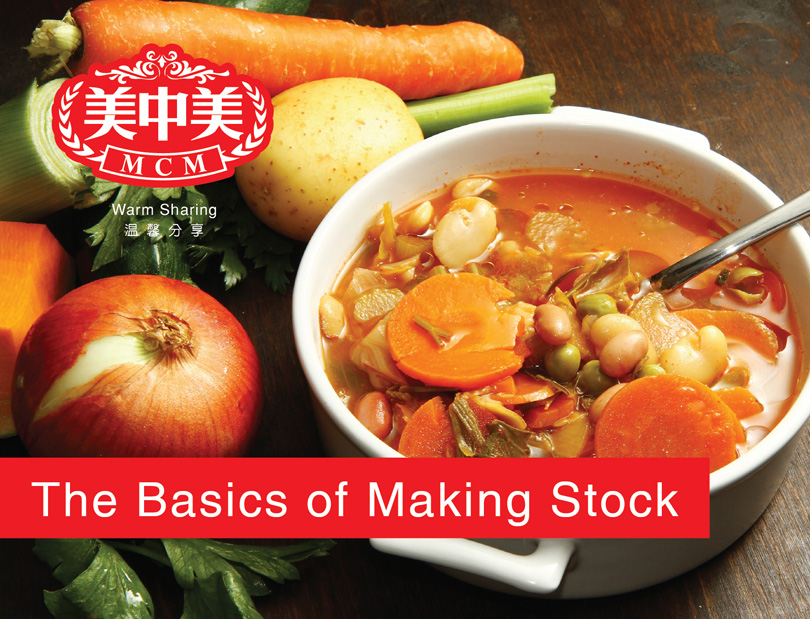TIPS: The Basics of Making Stock
Stock is the resulting liquid from foods that simmered in water, then strained out. The solids ingredients can be be vegetables, meat, fish, poultry, herbs, spices… Stock is rarely served clear, as a consommé or broth (broth is in fact a seasoned stock). Stock is more often combined with fresh vegetables or additional ingredients like noodles, rice, eggs, cheese… to make a tasteful soup or the basis of a specific sauce. Stock is not essential to any soup or stew, but it greatly enhance the final dish… That’s why stocks preparations are sometimes the most kept secrets from renowned chefs, that make a difference.
The Ingredients To Make Stock
Making stock is not expensive: it’s very easy to start with bits of vegetables that you have saved and frozen over the course of weeks, the trimmings of carrots, celery, onions, and other vegetables as well. Note that trimmings from vegetables that taste strong like broccoli and asparagus will bring a very distinct flavor to the stock, and this is something you probably don’t want at the end.
Concerning protein sources, save just about every scrap from trimmings of chicken, meat, or fish. But avoid chicken skin, fat and fish gills and organs. Stock making is a good reason for buying whole chicken and cutting it up. The meaty raw bones of a single chicken, with a few vegetables, will provide enough flavor for a quart or two of stock.
The same thing applies with seafood in the shell, whole fish, or any other meat on the bone. Of course, it’s easier and better to begin with fresh, whole ingredients, but it can be expensive on the long run.
Buy a carrot, an onion, a celery stalk, a chicken, some seasoning, for a few dollars, and you can prepare 3 liters of stock, which is enough for 2 or 3 batches of soup, or soup and a wonderful risotto. You can put onion, carrot, and celery into your stockpot, but almost any ingredient can substitute for anything else: turkey for chicken, cooked meat for raw, change amounts of ingredients and so on.
Bones are also an important part of many stock recipes, especially for long simmering stocks, but they are not obligatory. Know that a stock made of bones only will taste bones rather than meat. Most raw bones you can buy are quite meaty, so that its not really a problem. If you are making a stock with leftovers and are using meatless bones, you should buy a few chicken wings, backs, or necks and add them with the bones so that you will improve the flavor greatly.
There are other ingredients you can add depending on what flavor you want to develop: a mild or hot chili pepper, cloves of garlic, some dried mushrooms (really good).






